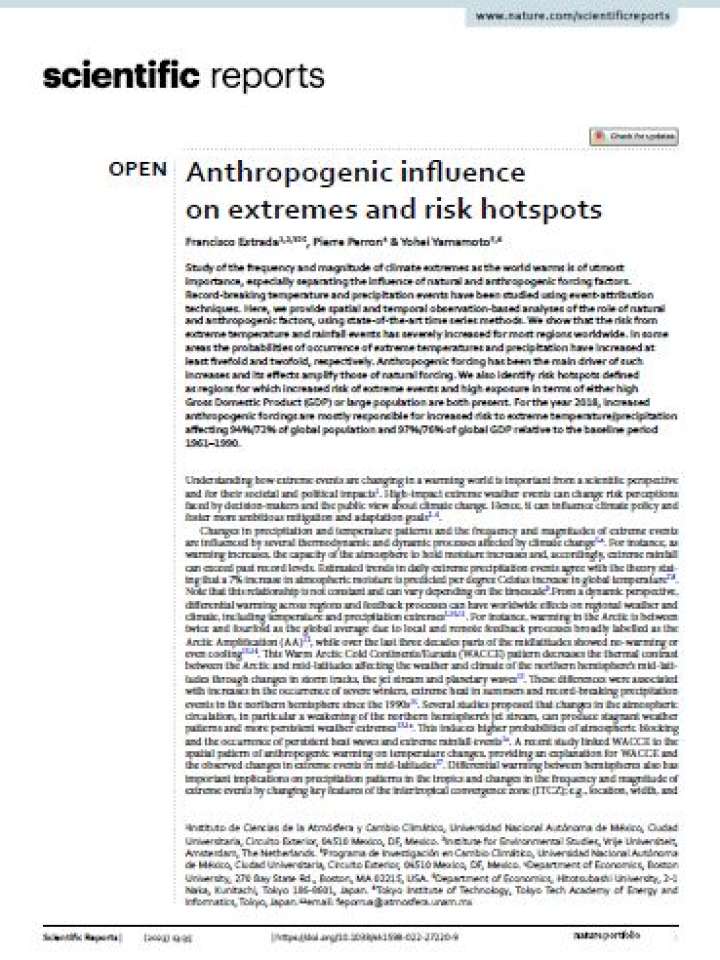Anthropogenic influence on extremes and risk hotspots
This study provides spatial and temporal observation-based analyses of the role of natural and anthropogenic factors in climate extremes, using state-of-the-art time series methods. The authors show that the risk from extreme temperature and rainfall events has severely increased for most regions worldwide. In some areas, the probabilities of occurrence of extreme temperatures and precipitation have increased at least fivefold and twofold, respectively.
Anthropogenic forcing has been the main driver of such increases and its effects amplify those of natural forcing. The researchers also identify risk hotspots defined as regions for which increased risk of extreme events and high exposure in terms of either high Gross Domestic Product (GDP) or large population are both present. For the year 2018, increased anthropogenic forcings are mostly responsible for increased risk to extreme temperature/precipitation affecting 94%/72% of global population and 97%/76% of global GDP relative to the baseline period 1961–1990.
Explore further
